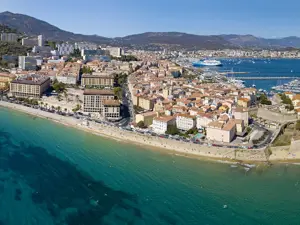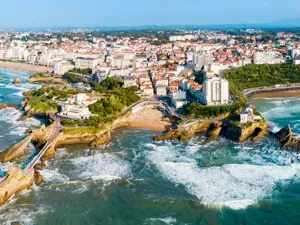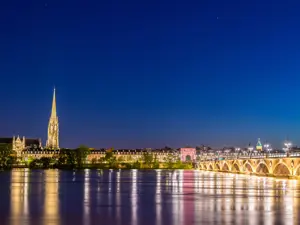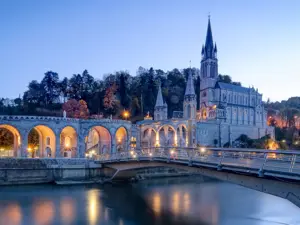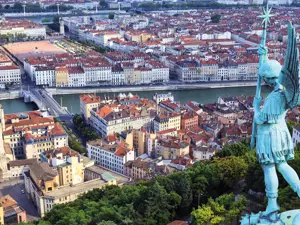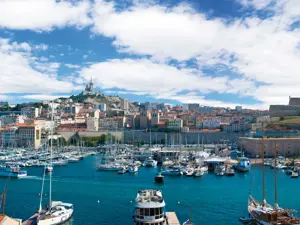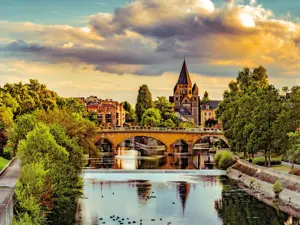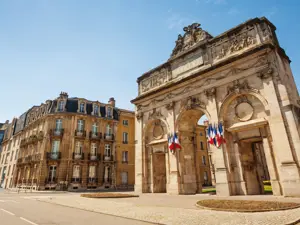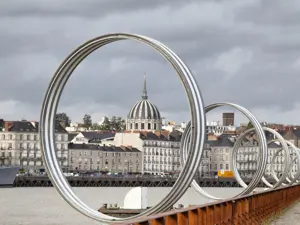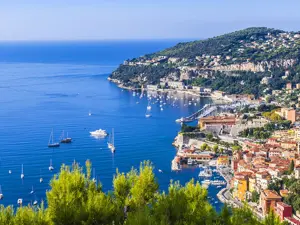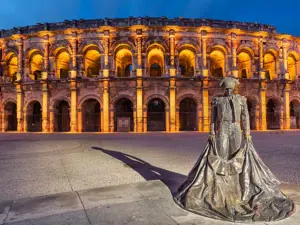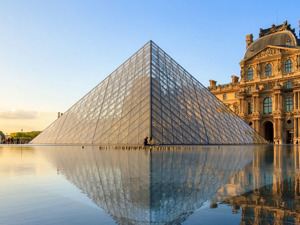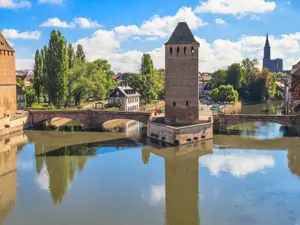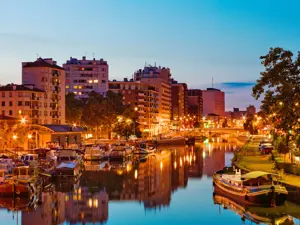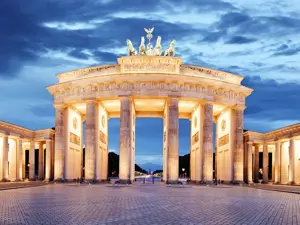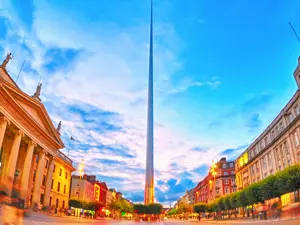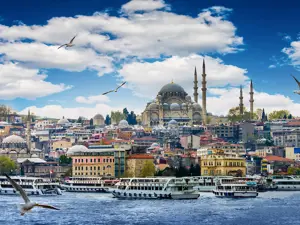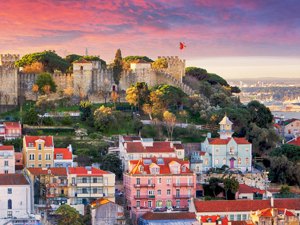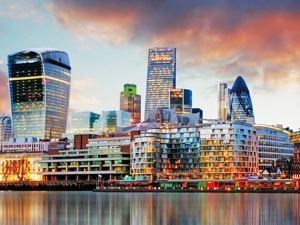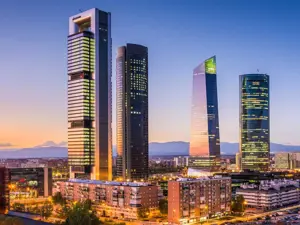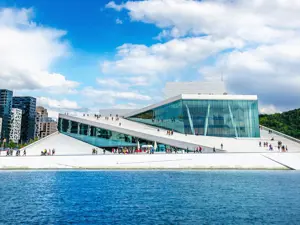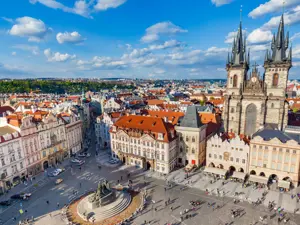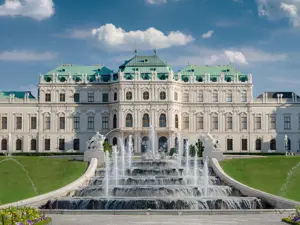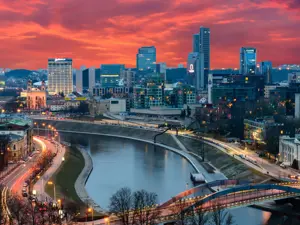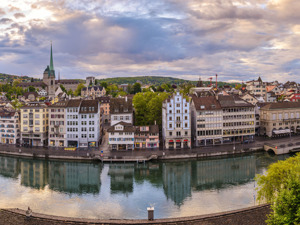The most flemish of French cities
A lively, welcoming city in the north of France, almost on the border with Belgium and not far from Great Britain, the chief town of the region of Nord-Pas-de-Calais preserves in its architectural heritage the legacy of its past association with Flanders: its monuments display the magnificence of the Flemish style, being embellished with stucco decorations, coloured glass and tall spires that reach up to the sky. The name is derived from the origins of the city, which developed in the middle of the River Deule. In ancient French it was called L’isle, the Island, which later became Lille. Today it is the largest and most exciting city in northern France because of its important historical and cultural past, and in 2004 it was designated a European Capital of Culture.
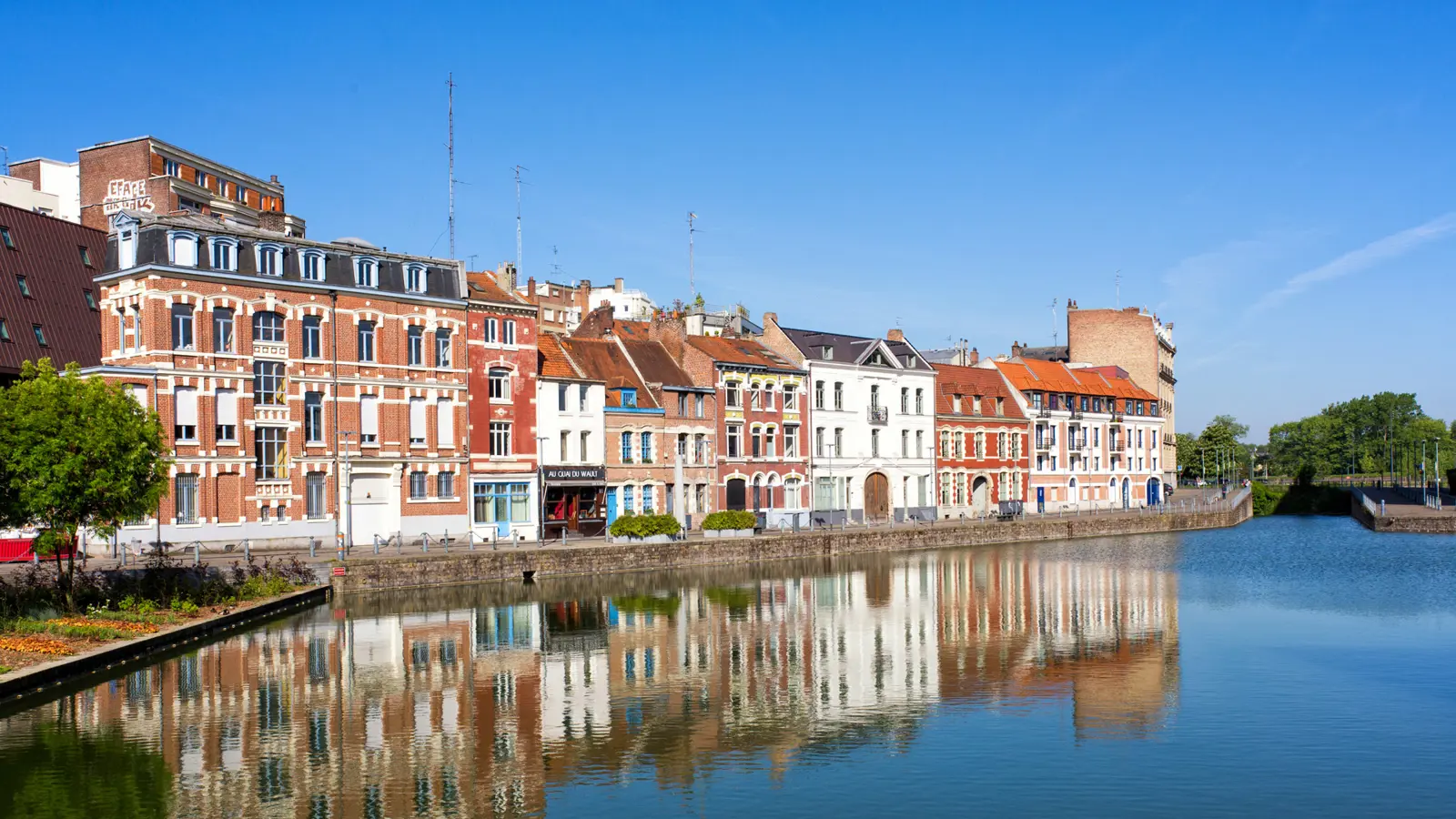
View of Lille overlooking the Deule River Copyright © Sisterscom.com Shutterstock
In ‘Vieux Lille’ Flemish art lives alongside elements of industrial architecture, industry being a source of prosperity in the nineteenth century when activities flourished particularly in the textile (cotton and linen), metal-working and chemical industries. This area, still with its medieval imprint, offers continuous surprises to visitors strolling along its maze of narrow streets, which are overlooked by the ancient buildings of the guilds, Renaissance constructions and Gothic churches.
The Stock Exchange of Lille
The Ancienne Bourse (stock exchange), situated on the east side of Grand Place, is without doubt the most beautiful monument of the city. It was built in the mid seventeenth century in Flemish style at the behest of a group of merchants and financiers who were obliged to meet in the street because they had no place to discuss their business.
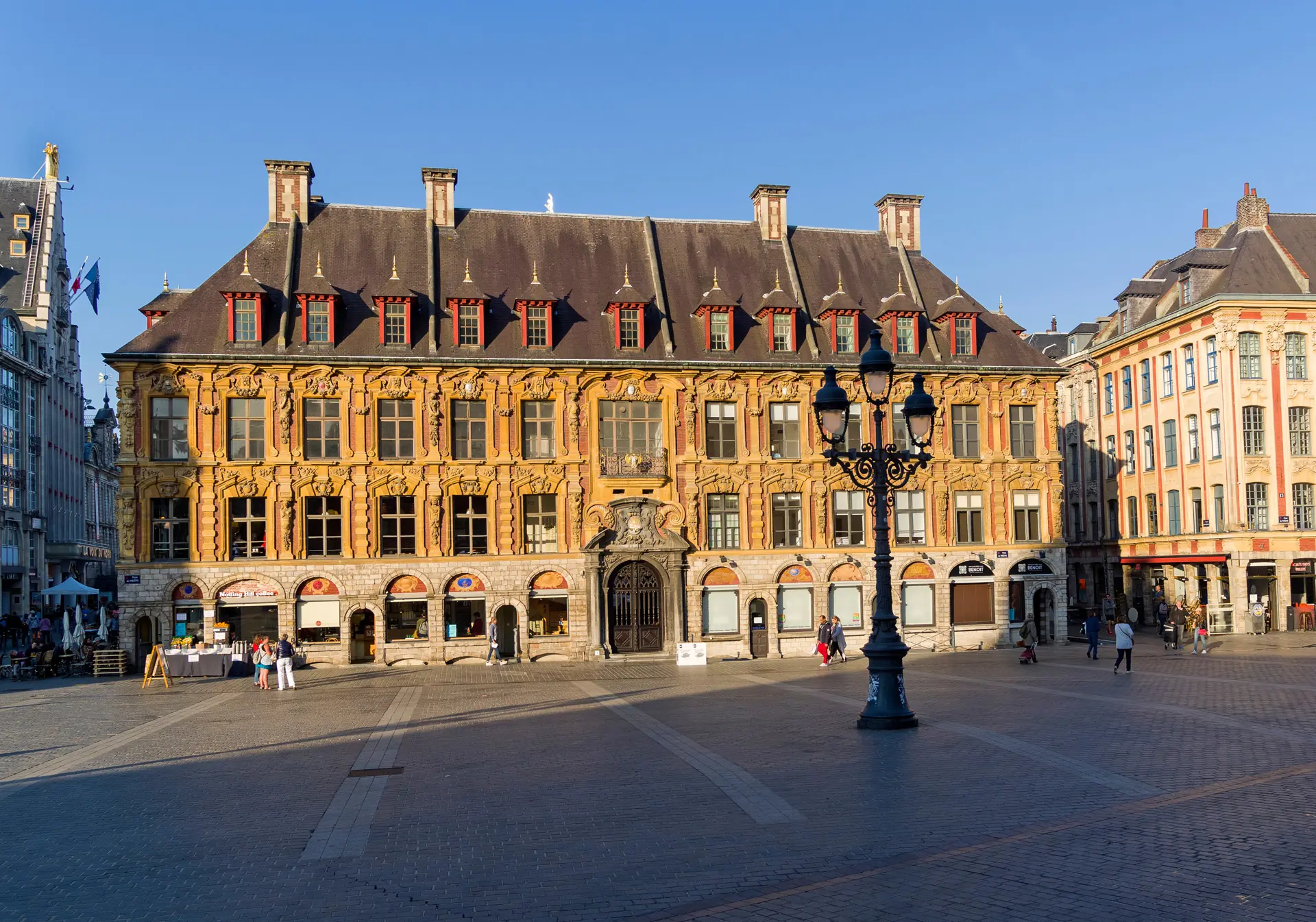
Today the beautiful courtyard and arcades of the Ancienne Bourse are the site of the largest Flea Market in Europe, which sells antique gems and more modern objects, jewels, books and many other items.
In the centre of Grande Place, once called Place De Gaulle in honour of its most illustrious citizen, a fountain with large statue of the Grande Déesse, the Great Goddess, stands to commemorate the city’s resistance to the Austrian assault of 1792: here residents love to meet and chat.
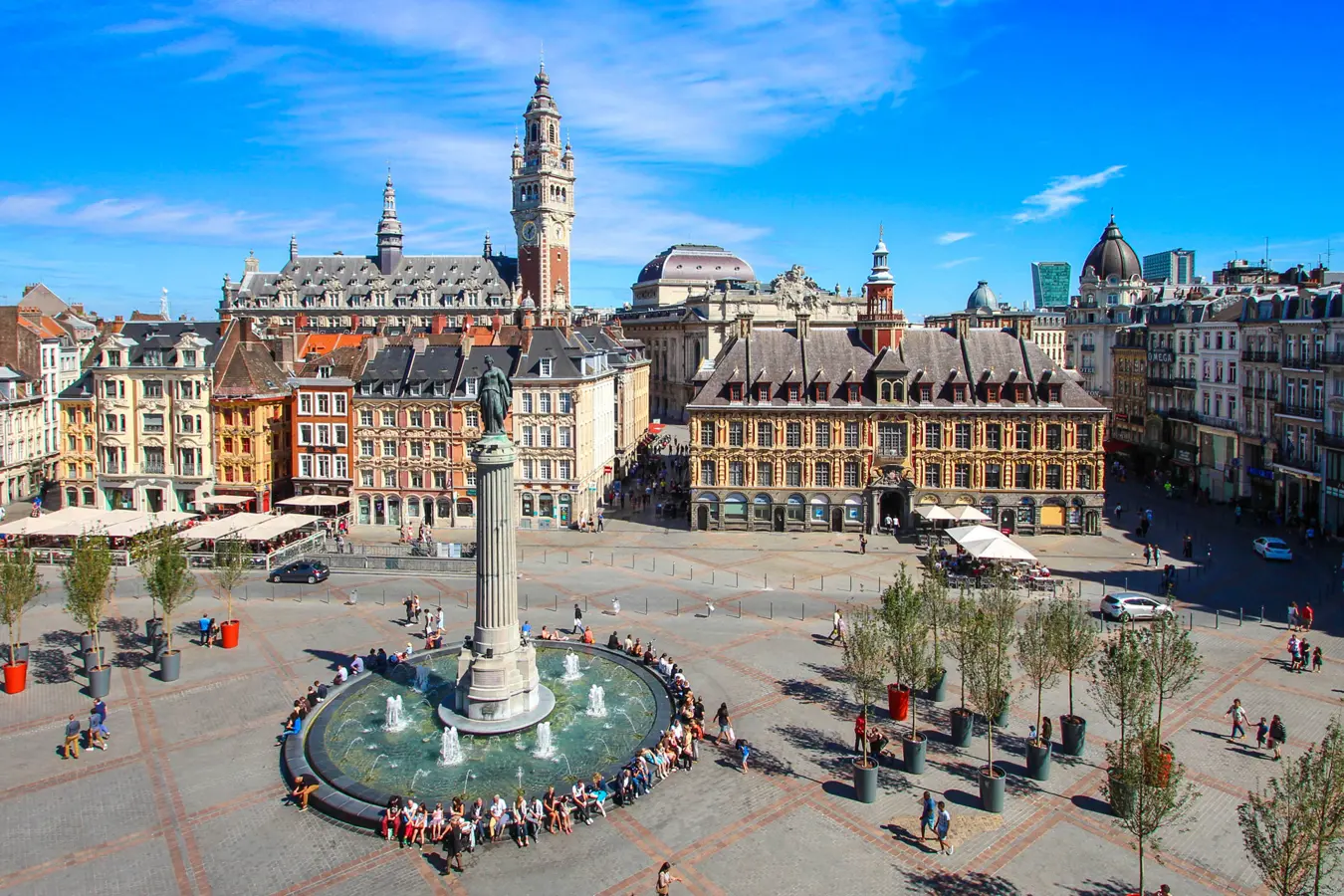
Lille, city of culture, is also proud of its extraordinary Museum of Fine Arts, the second most important in France next to the Louvre of Paris for the valuable works it contains; alongside stands the Natural History Museum, and the LAM, devoted to modern art.
Citadel, parks and gardens of Lille
In 1668, the Citadel was built by the military architect Marquis de Vauban to protect the city. A solid structure able to withstand any attack, it is a wonder of military engineering and considered unassailable. Today, in its forest, the green lung of Lille, is an extraordinary Zoo with over 100 different species of animals.
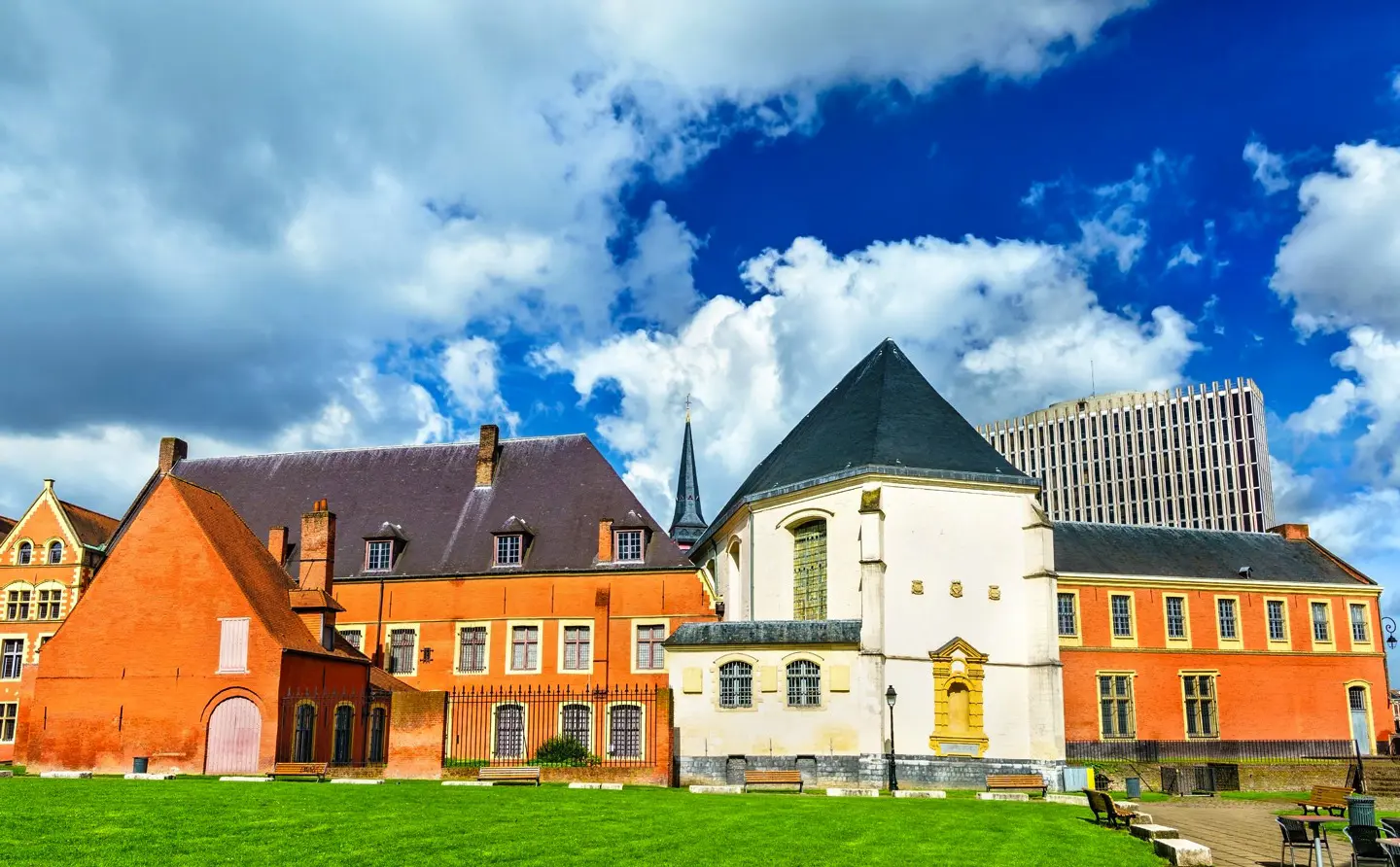
Another must-see garden is that of the Hospice Comtesse, founded as a work of charity by the Comtesse de Flandre Jeanne de Costantinople in 1237, with its splendid red-brick facade in Flemish Renaissance style. Today it has a wonderful Museum, which in its internal garden healing plants are cultivated according to ancient medieval traditions.
The last vestiges of the pomp of the Dukes of Bourgogne can be seen in Palais Rihour, which was built by Philip the Good for his court of 1,200 people in Gothic Renaissance style and has a beautiful tall tower, today the site of the Tourism Office.
The churches of Lille
Churches well worth visiting include the Gothic Church of Saint Maurice, with its splendid apse, and the Cathedral of Notre Dame de la Treille, dedicated to the miraculous Virgin Mary protected by an iron trellis.
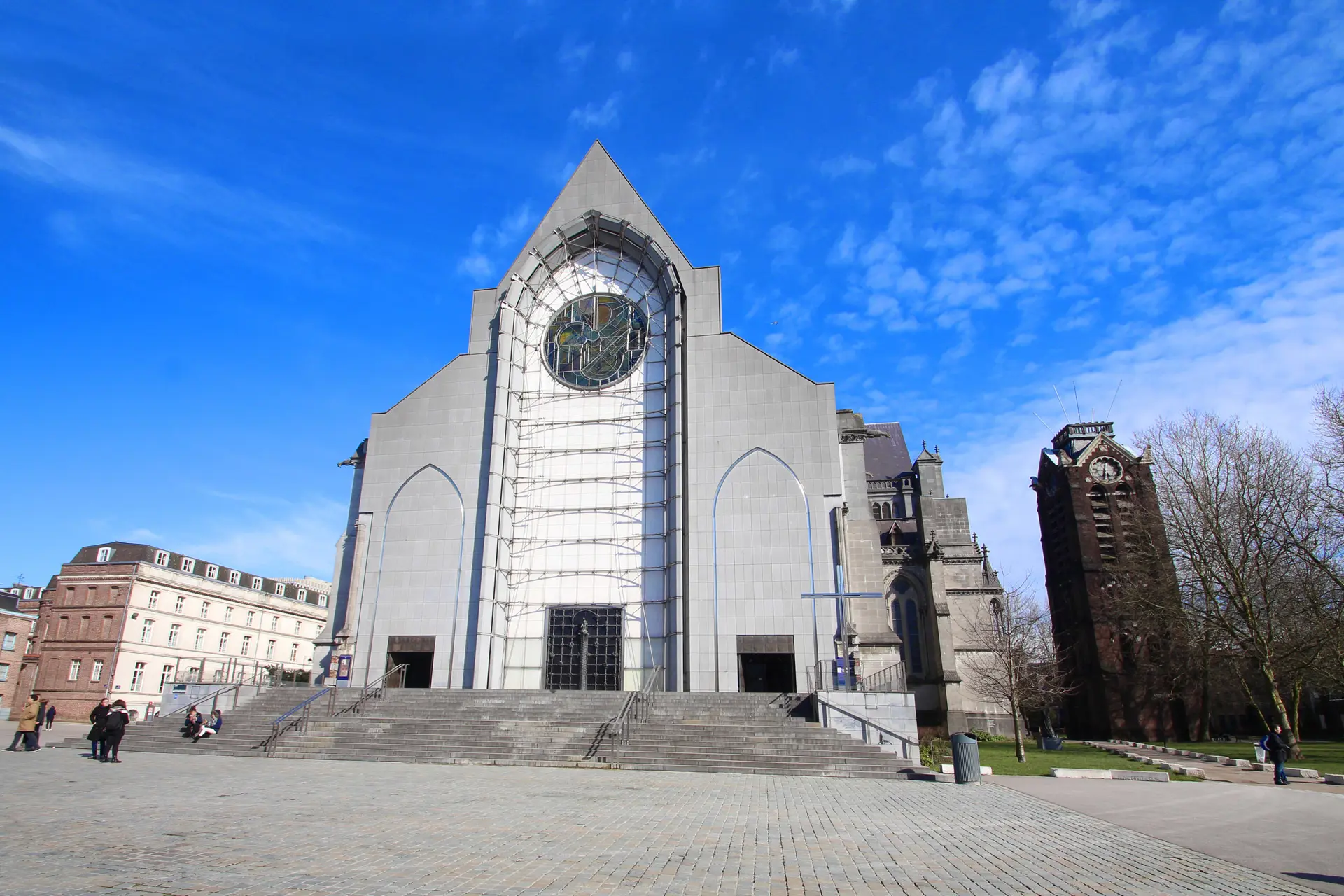
Lille attracts visitors not only for its museums and artistic monuments, but also for its events, including the Braderie (flea market) in September, a market that extends for 100 km along the streets and is attended by 2 million visitors each year.
Traditional dishes of Lille
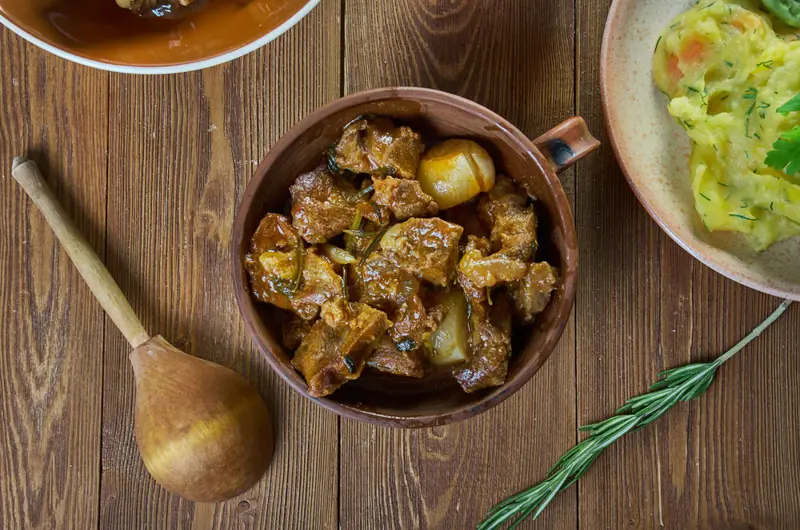
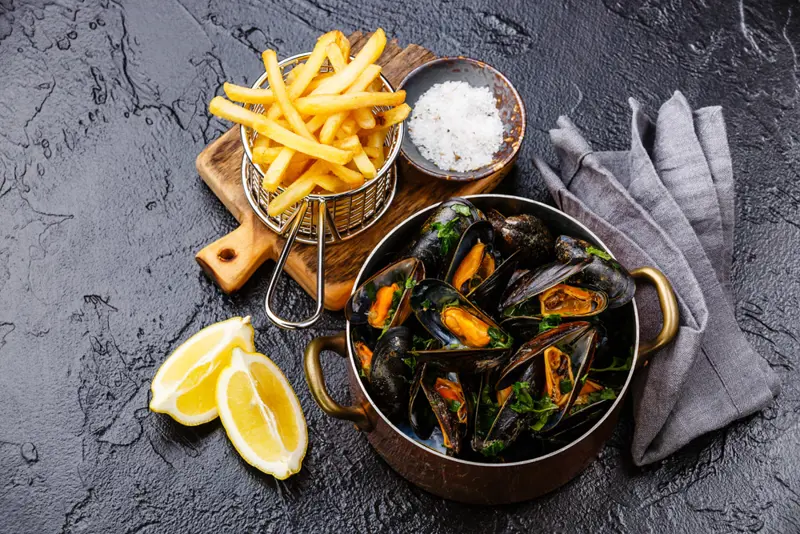
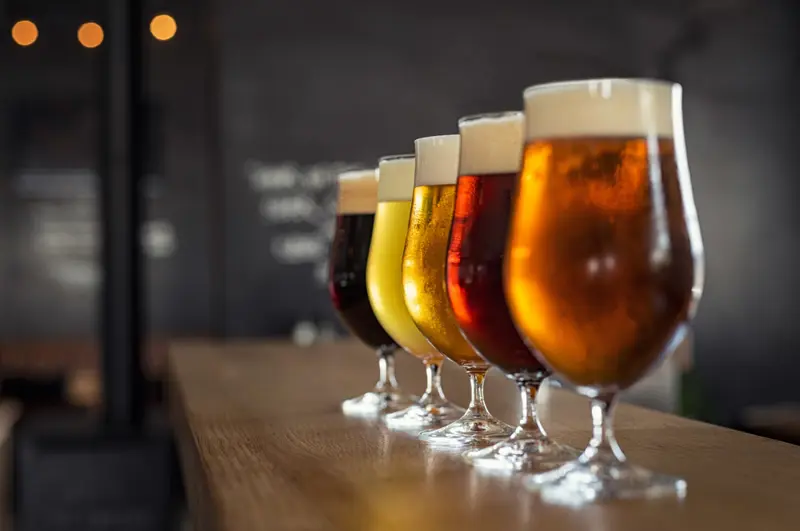
The cuisine is inspired by Flemish traditions, and can be enjoyed in local restaurants called estaminets, which offer flavoursome dishes such as carbonnade flamande (a beef stew cooked in beer), potjeleesch, a terrine of local meat, or mussels and fries, which are always accompanied by exceptional local beers.
Text by Anna Glik
Updated by Alisè Vitri
Tourism Board
www.lilletourism.com
Partnership with Booking.com
Where to sleep in Lille
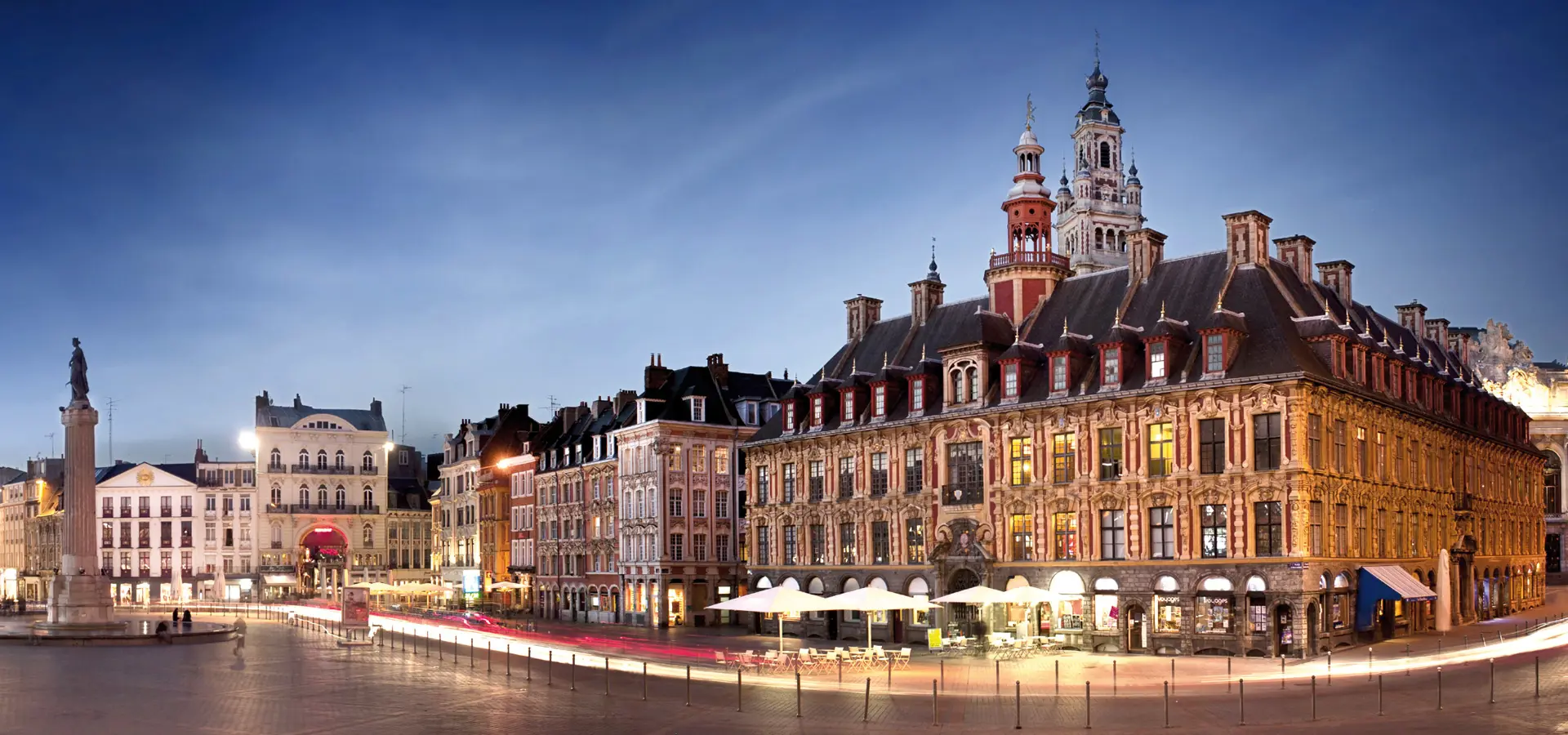
Lille is a welcoming city and offers different possibilities for accommodation.
To find the ideal hotel and the best offers you can do a search for the stars but also for districts or landmarks.
STARS
Hotel for stars, differentiated by type of services:
DISTRICTS
Hotels in the districts
LANDMARKS
Hotels in tourist areas
LANDMARKS
Hotels in tourist areas
AIRPORT
Hotels near the airport
WHERE TO GO in LILLE
Monuments and Museums of Lille
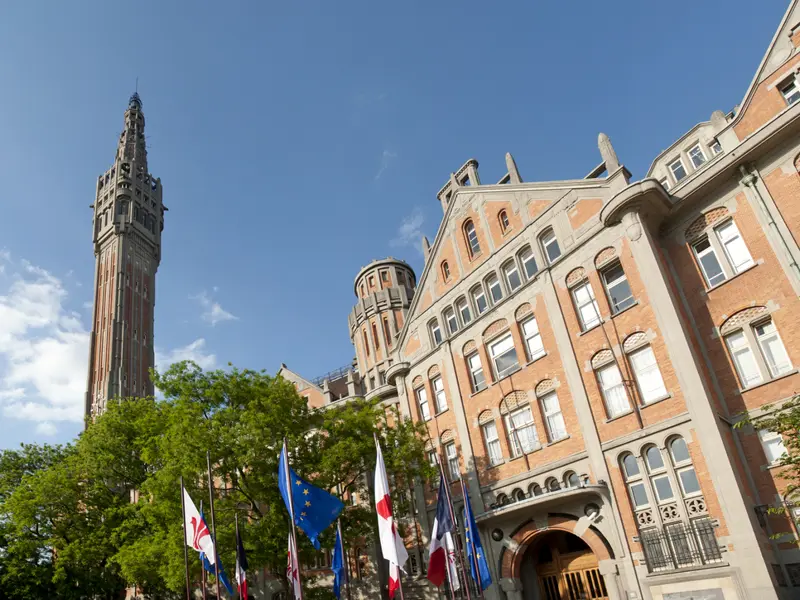
CITY HALL OF LILLE
This imposing building combines the local traditions of the past with visible Art Deco influences. Its bell tower, a symbol of the municipal freedom of the city, was inscribed on UNESCO’s list of World Heritage Sites in 2005. Inside, the staircase, corridors and rooms are adorned with a vast collection of contemporary artworks. The belfry towers over the city to a height of 104 metres and is the tallest of the region.
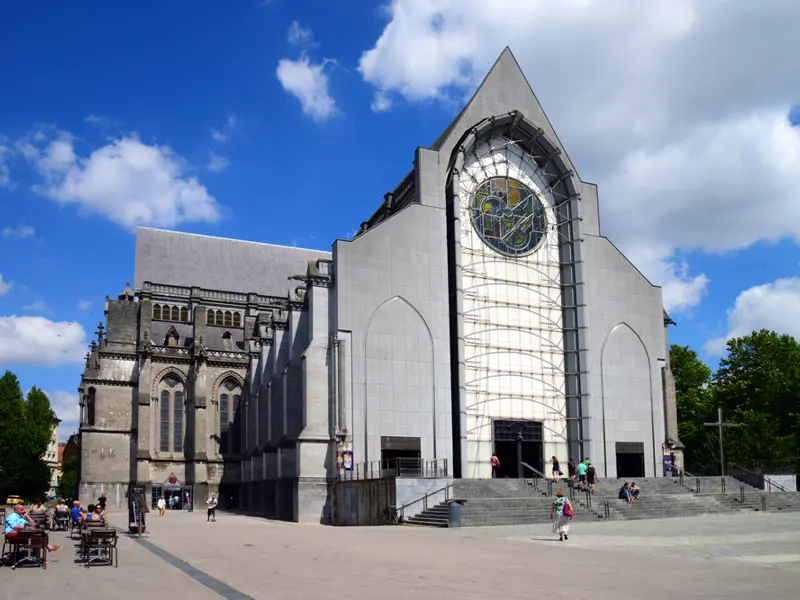
CATHEDRAL OF LILLE
The Notre Dame de la Treille Cathedral (Our Lady of the Trellis) is a majestic monument. In one of the chapels of its spectacular interior, the history of the city and region is “written” on the floor and walls, on the windows and in the mosaics. The ecclesiastical building was declared a Historic Monument of France in 2009.
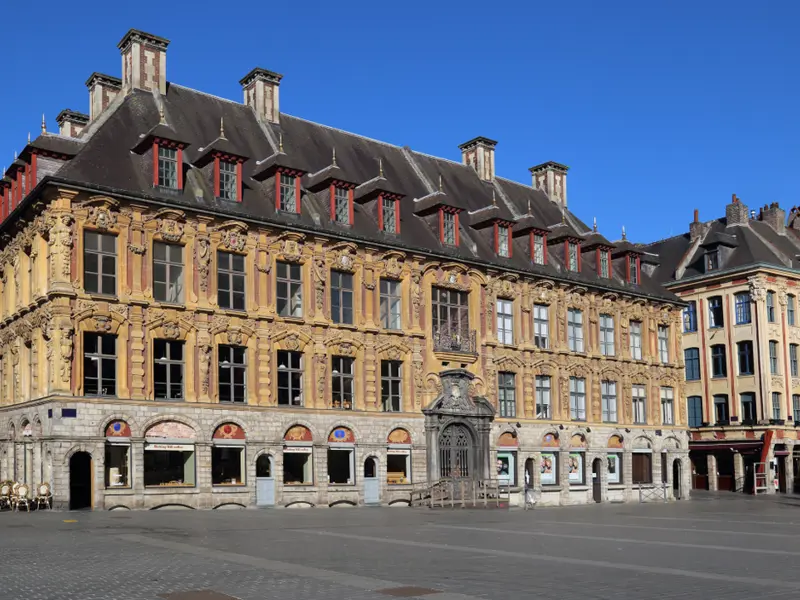
OLD BOURSE OF LILLE
The most imposing monument of the city and symbol of its former prosperity, in terms of splendour the Old Stock Exchange is on a par with the Anvers Stock Exchange. Four Flanders lions guard the four entrances, testifying the fact that Lille was once Dutch territory. The façade is a triumph of bas-relief ornaments: cornucopia, garlands of flowers and fruit and statues in Flemish Renaissance style. The place of honour on top of the belfry is reserved for Mercury, god of trade. Don’t miss the flea market that takes place in the vast internal courtyard.
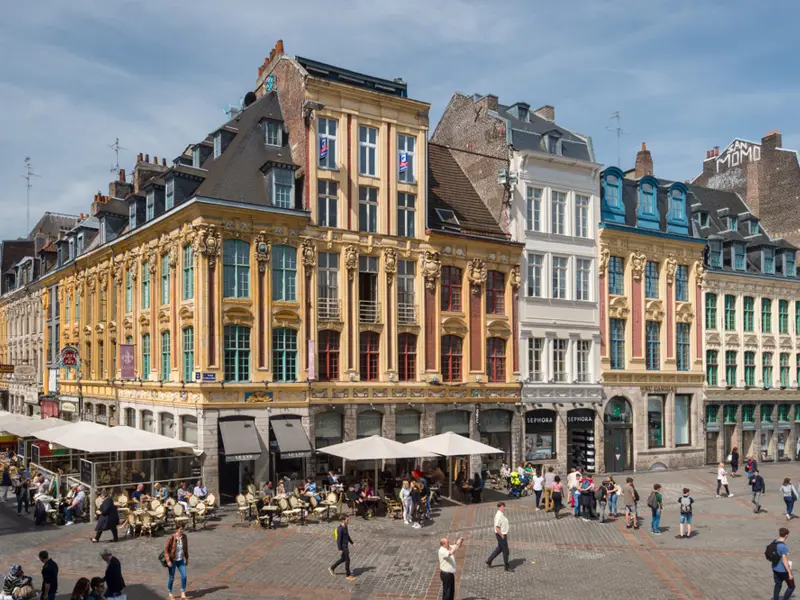
BIRTHPLACE OF DE GAULLE IN LILLE
For history lovers, the birthplace of the hero of World War II and later President of the French Republic is of great interest. Located in a beautiful building of the middle classes of the era, this typical ‘hôtel particulier’, as a townhouse was known, illustrates the time of the birth of the General through portraits, items in daily use and family mementos. Today it belongs to and is managed by the Fondation Charles de Gaulle and is an historic monument.
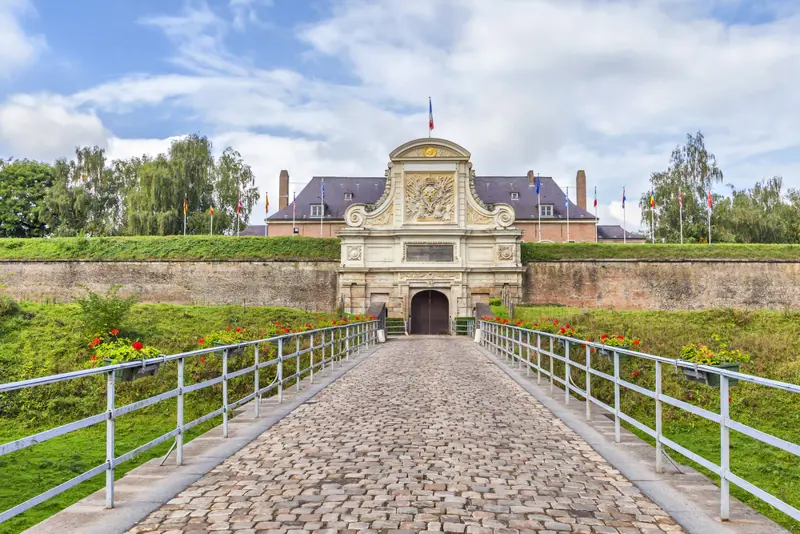
TEH CITADEL OF LILLE
Built between 1667 and 1670 between the Canal de la Deûle and the greenery of the Bois de Boulogne at the behest of Louis XIV, it is considered the “queen of citadels”. With a star-shaped pentagon layout, it is surrounded by bastions that make it a masterpiece of fortification.
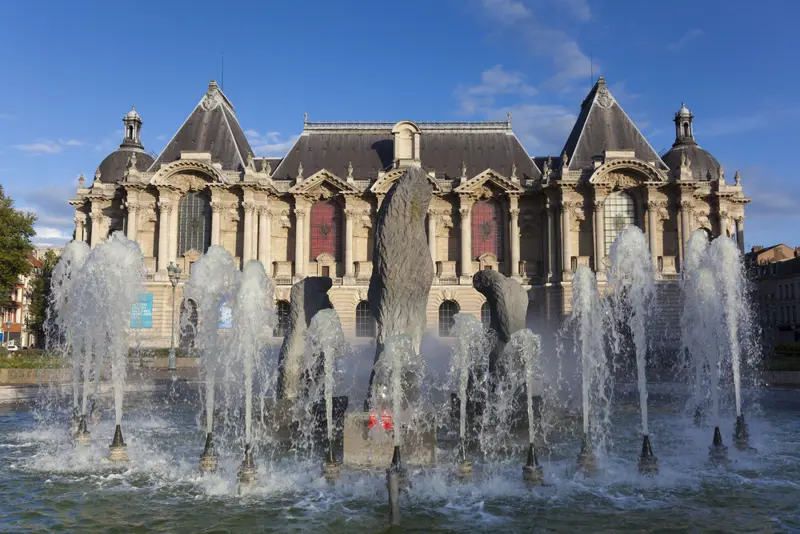
FINE ART MUSEUM
This is the second most important museum in France after the Louvre of Paris. It contains paintings by Rubens, Van Dyck, Goya and Delacroix, and wonderful eighteenth-century ceramics and a series of drawings, some of which are by Raphael.
LAM OF LILLE
This is one of France’s most important museums of modern and contemporary art, and includes masterpieces of Cubism (Picasso, Braque, Laurens), Fauvism (Derain, Rouault), the Paris School (Modigliani, Utrillo, Buffet), as well as Surrealism (Miró and Masson). The section dedicated to Primitive Art is also very interesting.
Excursions in Lille and surroundings
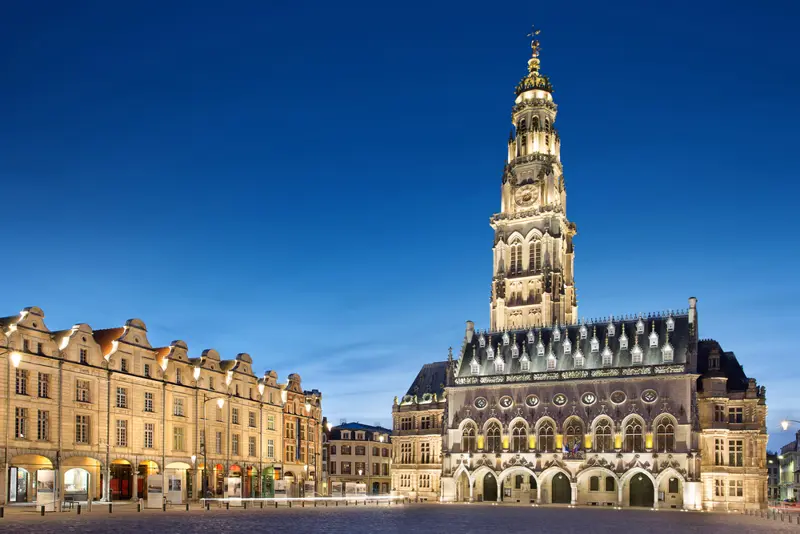
ARRAS
Arras, located in northern France, is famous for its Flemish Baroque architecture, with stunning squares like Grand' Place and Place des Héros. The city is also known for its underground tunnels, the "Boves", and its significant role during World War I.
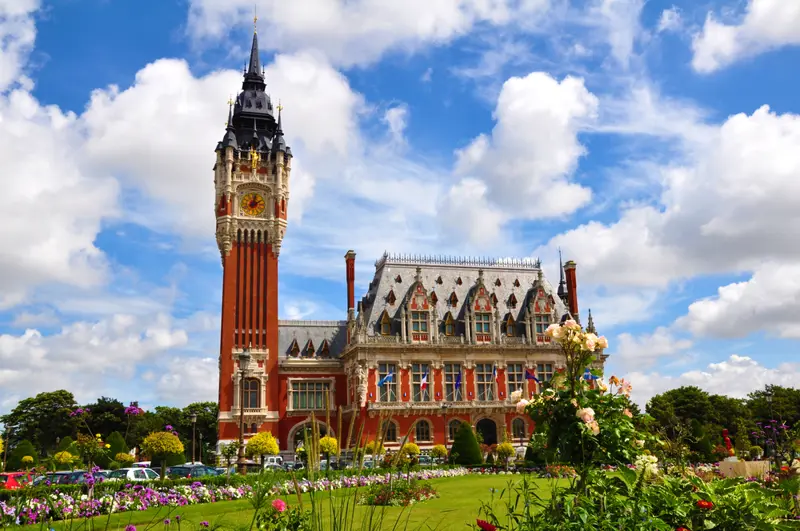
CALAIS
Calais, located on the northern coast of France, is an important port on the English Channel, known for its historic lighthouse and Rodin's monument "Les Bourgeois de Calais". The city is also famous for its proximity to England and the Channel Tunnel that connects the two countries.
Partnership with GetYourGuide
Discover all tours
News & Useful info
You might be interested in
Destinations found in the vicinity
Other destinations
Airports nearby Lille





